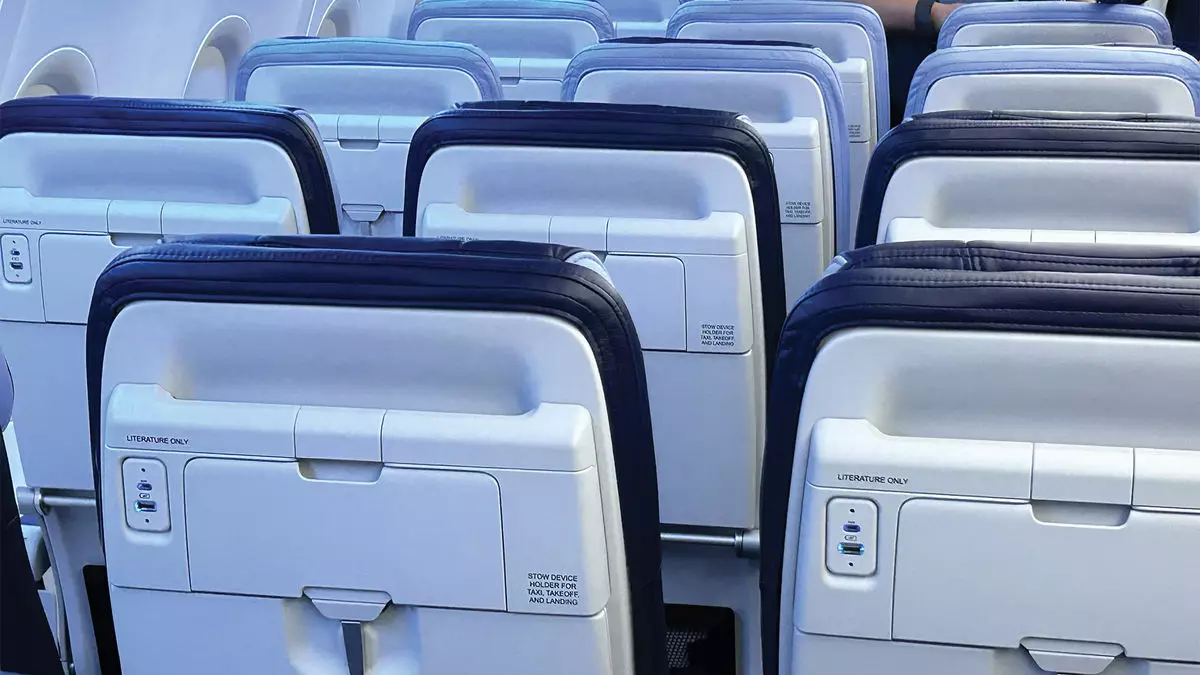In a recent announcement, Southwest Airlines disclosed that the much-anticipated reconfiguration of its aircraft to include extra-legroom seating will not commence until mid-2025. This delay marks a notable shift from the airline’s initial plans to begin retrofitting by March. The decision has drawn attention given that many travelers remain eager for improved in-flight comfort, particularly as travel demand continues to rise post-pandemic. However, the introduction of extra-legroom seats is only part of a broader commercial strategy aiming to elevate customer experiences and operational efficiency.
The airline has indicated that extra-legroom seats will represent approximately one-third of its fleet, offering an enticing 34 inches of space between rows, a significant upgrade for passengers accustomed to more cramped conditions. To accommodate these new seats, Southwest plans to reduce the pitch on its 737-8 aircraft by one inch, which would result in standard seats having a 31-inch spacing similar to that of the 737-7. While it may seem like minor adjustments, such changes highlight Southwest’s need to balance affordability with enhanced passenger comfort.
Moreover, the company has set forth a timeline that is contingent upon obtaining necessary regulatory certifications. Ryan Green, the Executive Vice President of Transformation, mentioned that the airline anticipates receiving the Federal Aviation Administration (FAA) weight and balance certification for the new configuration in the first quarter of 2025. However, a secondary certification known as the Supplemental Type Certificate is not expected until the second quarter. This dependency on regulatory approvals raises pertinent questions about operational readiness and potential setbacks that could further push back the retrofitting process.
The retrofitting is planned for a fleet of roughly 800 aircraft, with ambitions to complete 50 to 100 retrofits per month. While the pace of this rollout is commendable, it may not be quick enough to meet the growing demand for air travel or the expectations of passengers seeking more comfort in the near term.
In addition to enhancing its fleet’s configuration, Southwest is pursuing strategic partnerships to diversify its service offerings. This includes a partnership with Icelandair, set to launch in February through Baltimore, with plans to extend to Nashville and Denver. By partnering with international airlines, Southwest can enhance its connectivity and service appeal.
Furthermore, the rebranding of its vacation package service, now dubbed “Getaways by Southwest,” incorporates collaborations with prominent hotel chains, exemplified by the addition of MGM Resorts in Las Vegas. This move serves to broaden the airline’s market appeal, enabling it to tap into a greater share of the vacation travel segment. Chief Commercial Officer Andrew Watterson underlined that sales will primarily focus on direct channels, suggesting a shift away from traditional travel agency models.
Despite the operational concerns and adjustments, Southwest Airlines has shown resilience in its recent financial performance. The airline reported a net income of $261 million for the fourth quarter of 2024, a remarkable turnaround from the net loss of $252 million during the same quarter in the previous year. Overall, the company has achieved a revenue of $27.5 billion for 2024, reflecting a 5.3% increase. These figures illustrate the carrier’s ability to rebound, largely due to a 7.9% reduction in operating expenses, driven primarily by decreasing fuel costs.
Southwest continues to set ambitious targets for revenue and margin growth, projecting margins of 3% to 5% heading into 2025. CEO Bob Jordan reflected a positive outlook at the recent Investor Day, emphasizing the foundations being laid for sustainable growth. As travel trends evolve and passenger preferences change, Southwest Airlines is positioning itself to adapt while maintaining its focus on affordability and operational efficiency.
As Southwest Airlines navigates through potential hurdles and opportunities in the next few years, the commitment to improving customer experiences through innovations and strategic partnerships is clear. The delayed rollout of extra-legroom seating may be disappointing for some, but it serves as a testament to the airline’s cautious approach to expansion amid regulatory complexities. Moving forward, the airline will need to ensure that these upgrades correspond with the evolving landscape of air travel while continuing to meet the expectations of its passengers effectively.


Napsat komentář